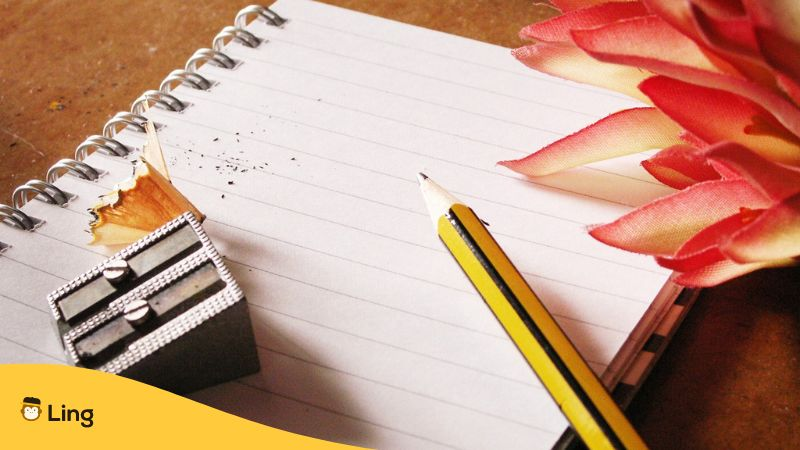In this post, let’s jump headfirst into the Tagalog words for writing instruments– yes, we’re talking about pens, pencils, and more! But wait, these aren’t just ordinary tools; they’re the secret passages to understanding the Filipino people’s deep love for the written word and artistic expression. Buckle up as we uncover the hidden gems and cultural treasures tucked away in Tagalog’s vocabulary. Let’s begin!
What Is A Panulat In Tagalog?
In Tagalog, the word ‘panulat’ directly docks into the English harbor as none other than our everyday ‘writing instrument.’ What’s interesting here is that ‘panulat’ isn’t just an ordinary word in the Filipino language. It’s more like the humble hero behind the battlefront of ideas — an unassuming medium that has the power to turn thoughts into tangible realities.
Just like how Harry had his magic wand and King Arthur his Excalibur, many of us wield the ‘panulat’ — the pen, the pencil, or heck, even that random crayon, to manifest our wildest imaginations and most profound thoughts onto a piece of paper. Unassuming as it may seem, the ‘panulat’ holds immense influence and significance in our lives. For instance, some Filipino heroes are known to wield this weapon against the Spaniards centuries ago.
Essential Tagalog Words For Writing Instruments
Dive in, and you’ll not only sharpen your language skills but also develop a profound appreciation for the rich heritage and creativity embedded in these Tagalog terms for writing tools.
Pencil (Lapis)
“Lapis,” a Tagalog word for pencil, unlocks the world of creativity. It’s a tool that sparks a lifelong journey into writing and drawing during our formative years.
Pen (Pluma)
The Tagalog word for pen is “pluma.” Pluma is still a crucial instrument for traditional note-taking and document signing in the current digital era.
Ink (Tinta)
A liquid or semi-liquid material known as “tinta” is frequently used for writing, drawing, or printing. It usually includes pigments, dyes, or other colorants suspended in a solvent to enable it to flow easily onto a variety of surfaces, including paper, fabric, or skin.
Crayons (Crayola)
Children and artists frequently utilize “krayola”, which are wax-based drawing implements. They are encased in a cylindrical or rectangular shape, come in a variety of colors, and are simple to grip and manipulate. Crayons are a popular choice for coloring and artistic projects because they produce vivid traces when applied to paper or other surfaces.

Writing Accessories In Tagalog
In addition to the standard writing tools, Tagalog has words for other writing supplies that round out the writing process.
Sharpener (Latas)
The tip of pencils, crayons, and other writing and drawing implements can be sharpened with the help of a simple tool called a “latas.” Typically, it consists of a cylindrical or conical hole with a blade within that removes the writing instrument’s worn or blunt tip material to reveal a finer and sharper point.
Paper (Papel)
Every writer or creative person needs paper to work on. In Tagalog, the word “papel” refers to the blank canvas itself.
Notebook (Kuwaderno)
The Tagalog word kuwaderno means notebook. It serves as the home for thoughts, notes, and sketches.

Calligraphy For Baybayin Script
Along with these writing implements, classic calligraphy supplies like brushes and ink sticks are still employed by artists and calligraphers who work in traditional Filipino calligraphy forms like “Baybayin.”
Baybayin is an ancient script that weaves its way through the colorful tapestry of the Philippines’ cultural heritage. Originating in pre-colonial times, Baybayin served as the eloquent voice of diverse indigenous Filipino communities, capturing their languages, beliefs, and traditions in its intricate characters. Flowing gracefully from left to right, each character represents a syllable or sound, making Baybayin a captivating art form of written expression.
Though it waned during Spanish colonization, it’s making a comeback, embracing its role as a symbol of Filipino identity and a bridge to the nation’s rich pre-colonial past. Today, Baybayin stands tall as a potent reminder of the Philippines’ linguistic and cultural diversity, igniting a fresh admiration for this exceptional script and its enduring legacy.
Tagalog Words Related To Writing
Through learning the following words, you’ll uncover not just language but a piece of the Filipino soul, making your journey into Tagalog’s literary landscape a truly enriching experience!
| English | Tagalog |
|---|---|
| Writing | Pagsusulat |
| Writer | Manunulat |
| Document | Kasulatan |
| Composition | Akda |
| Essay | Sulatin |
| Letter | Liham |
| Commentary | Komentaryo |
| Speech | Talumpati |
| Editorial | Editoryal |
| Poem | Tula |
| Character (letter) | Titik |
| News | Balita |
| Magazine | Magasin |
| Newspaper | Pahayagan |
| Copy | Kopya |
| Editing | Pagwawasto |
| Title | Pamagat |
| Foreign | Banyaga |
| Anthology | Antolohiya |
| Foreign Language | Banyagang Wika |
Evolution Of Writing Instruments In The Philippines
Centuries ago, the Philippines’ indigenous people crafted primitive pens from bamboo, dipping them into plant-based inks made from crushed leaves and charcoal. Then, in the 16th century, Spanish colonialists brought European quills made from bird feathers, favored by the Spanish and Filipino elite. Fast forward to the American colonial era, and fountain pens replaced quills, spreading with the growth of education.
The disruption of World War II led to a resurgence of bamboo and makeshift writing tools due to a shortage of imported pens. In 1946, the Philippines eagerly adopted the reliable and convenient ballpoint pen. Today, a vibrant array of writing instruments, including ballpoints, gel pens, mechanical pencils, and markers, are indispensable tools in Filipino schools and offices.
Learn Tagalog With Ling
If the allure of the Tagalog language’s charming words for writing instruments has piqued your curiosity, then you’re in for a delightful adventure! Why not embark on a journey to learn this captivating language, from learning a Tagalog noun and discovering each Tagalog word’s meaning to knowing the English word for it?
If you’ve got a taste for more, you’re in luck because the Ling app has a treasure trove of language-learning goodies waiting just for you! With Ling, you won’t find dull and conventional lessons. Instead, you’ll dive into a world of fun and interactive language learning.
So, what are you waiting for? Expand your vocabulary and download the Ling app right now from the Google Play Store or App Store.



































































